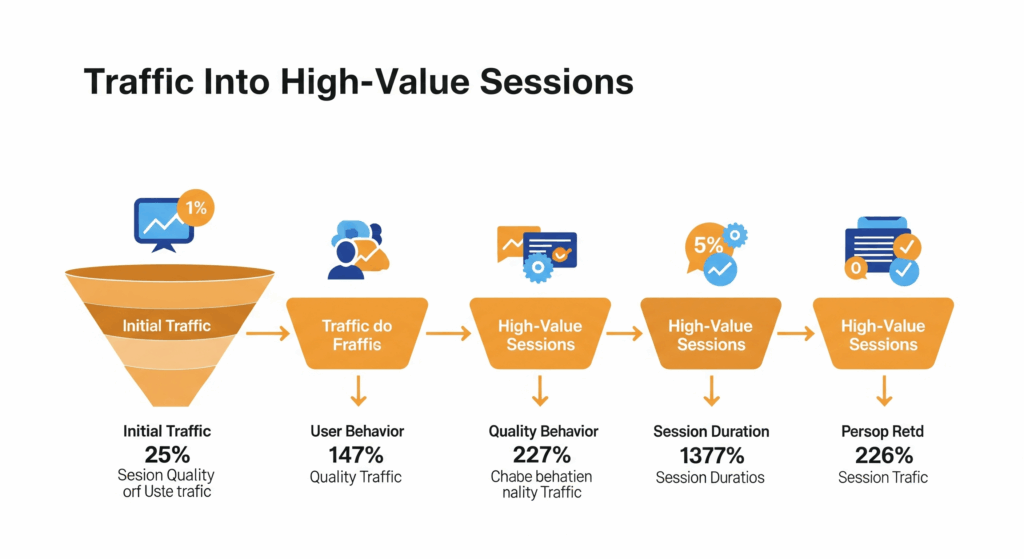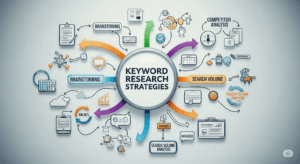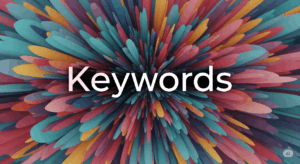We’ve all been there: you’ve poured resources into attracting visitors to your website, whether through SEO, paid ads, social media, or content marketing. The traffic numbers look great, but when you check your conversion rates, they’re… well, disappointing. It feels like you’re getting a lot of attention but not enough action. This phenomenon of low-converting traffic is a common headache for businesses.
But here’s an encouraging thought: every visitor to your site, even those who don’t immediately convert, represents an opportunity. They showed some interest, didn’t they? Our mission isn’t to dismiss them but to understand why they aren’t converting and then optimize their journey. This isn’t just about tweaking a button; it’s about building a better, more intuitive, and more persuasive online experience that leads to high-value sessions.
So, how do we turn those fleeting glances into meaningful engagements? It starts with a detective mindset and a commitment to continuous improvement.
Understanding Your “Low-Converting” Visitors: The First Step
Before you can fix the problem, you need to understand it. Not all traffic is created equal, and a “low conversion” might be signaling a deeper issue than just a bad button color.
1. Define “Low-Converting”:
First, what does conversion mean for your business? Is it a purchase, a newsletter sign-up, a download, a form submission, or a demo request? Once you have clear conversion goals, you can then identify traffic sources or segments that underperform against these goals.
2. Analyze User Behavior with Data:
This is where your analytics tools become your best friends. Dive into platforms like Google Analytics, Hotjar, or similar tools to understand:
- Bounce Rate & Exit Pages: Where are visitors leaving your site? High bounce rates on landing pages or high exit rates on crucial conversion pages are huge red flags.
- Time on Page & Scroll Depth: Are visitors engaging with your content, or are they quickly scanning and leaving?
- User Flow: How do users navigate your site? Are there dead ends or confusing paths?
- Device Performance: Are mobile users converting at a lower rate than desktop users? (Often, they are, highlighting a need for mobile optimization).
- Traffic Sources: Which sources (e.g., social media, organic search, paid ads, email marketing) bring in traffic that doesn’t convert well? This helps identify mismatches between your marketing message and your landing experience.
3. Understand User Intent:
This is perhaps the most critical insight. Why did these visitors come to your site? Were they just Browse, looking for information, comparing products, or ready to buy?
- If your content is informational (e.g., a blog post), a “conversion” might be an email sign-up, not an immediate purchase.
- If your traffic is coming from a broad keyword, their intent might be exploratory, requiring more nurturing.
- If it’s from a commercial-intent keyword, they should be closer to conversion, and a low rate signals a problem with your offering or page.
Strategies to Turn the Tide: Optimizing for Value
Once you’ve diagnosed the issues, it’s time to implement solutions. Here are actionable strategies to elevate those sessions:
1. Refine Your Value Proposition & Messaging:
Is your offer clear, compelling, and instantly understandable?
- Clarity is King: Within the first few seconds, visitors should know what you offer and why it matters to them.
- Benefit-Driven Language: Focus on how your product or service solves their problem or improves their life, not just its features.
- Match Intent: Ensure the message on your landing page perfectly matches the message or keyword that brought them there. Discrepancy creates immediate distrust and bounces.
2. Optimize Your Landing Pages for Conversion (CRO):
Your landing pages are often the make-or-break point.
- Clear Call-to-Action (CTA): Is your CTA prominent, actionable, and visually appealing? Use strong verbs and contrasting colors. Experiment with its placement (“above the fold” is often key).
- Minimize Distractions: Remove unnecessary navigation links, pop-ups (unless strategically timed, like exit-intent offers), or excessive information that pulls attention away from the main goal.
- Speed Matters: A slow-loading page kills conversions. Optimize images, leverage caching, and ensure your site is lightning-fast, especially on mobile. Google’s Core Web Vitals are important here.
- Visual Hierarchy: Guide the user’s eye naturally towards your CTA and key information using spacing, font sizes, and imagery.
3. Enhance User Experience (UX):
A smooth, intuitive experience keeps users engaged.
- Intuitive Navigation: Can users easily find what they’re looking for? Simple, consistent menus are crucial.
- Mobile Responsiveness: With a significant portion of traffic coming from mobile, a seamless experience on all devices is non-negotiable. Large, touch-friendly buttons and concise forms are vital.
- Streamline Forms & Checkout: Reduce the number of form fields to the absolute minimum required. Offer guest checkout options for e-commerce. Show progress indicators for multi-step processes. Every extra click or field is a potential drop-off point.
- Live Chat & Support: Offer immediate assistance through live chat. Sometimes a quick answer is all a hesitant visitor needs to convert.
4. Build Trust and Credibility (Social Proof & Trust Signals):
People buy from businesses they trust.
- Reviews & Testimonials: Showcase positive customer reviews, testimonials, and case studies prominently. Real-life experiences are powerful.
- Trust Badges: Display security badges (SSL certificates), payment processor logos, and industry certifications.
- Social Proof: Highlight numbers like “X happy customers,” “Y items sold today,” or “Z people currently viewing this product” to create a sense of urgency and popularity.
5. Leverage Personalization & Behavioral Triggers:
Treating every visitor the same is a missed opportunity.
- Dynamic Content: Show personalized product recommendations, offers, or content based on their past Browse behavior, demographics, or referral source.
- Exit-Intent Pop-ups: Offer a last-chance incentive (e.g., a discount, free shipping, or a helpful lead magnet) to visitors about to leave your site.
- Retargeting Ads: Not everyone converts on their first visit. Use retargeting campaigns to re-engage past visitors with tailored ads on other platforms.
6. Content is King, but Context is Queen:
Ensure your content isn’t just informative but also conversion-oriented.
- Content Funnel Alignment: Different content pieces serve different stages of the buyer’s journey. A blog post might aim for an email sign-up (top of funnel), while a product page aims for a purchase (bottom of funnel).
- Interactive Content: Quizzes, polls, or calculators can significantly boost engagement and provide valuable user data.
- Text-Based CTAs: Experiment with CTAs integrated naturally into your content, rather than just standalone banners. Studies show these can be highly effective.
The Continuous Journey: Test, Analyze, Iterate
Turning low-converting traffic into high-value sessions isn’t a one-time fix; it’s an ongoing process of Conversion Rate Optimization (CRO).
- A/B Testing: This is your secret weapon. Test different versions of headlines, CTAs, images, page layouts, form fields, and messaging. Even small changes can yield significant results.
- Heatmaps & Session Recordings: Use tools to visualize where users click, scroll, and get stuck. Watch actual user sessions to spot friction points.
- Feedback & Surveys: Ask your visitors directly! On-site surveys or feedback widgets can provide invaluable qualitative insights.
- Monitor KPIs: Constantly track your conversion rates, bounce rates, time on site, and other relevant metrics to measure the impact of your changes.
By adopting this data-driven, user-centric approach, you won’t just increase your conversion rates; you’ll build stronger relationships with your audience, create a more effective online presence, and ultimately drive sustainable growth for your business. So, start optimizing – your high-value sessions are waiting!







